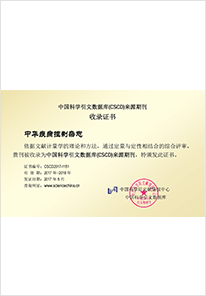2023 Vol. 27, No. 2
Display Method:
2023, 27(2): 125-126.
doi: 10.16462/j.cnki.zhjbkz.2023.02.001
Abstract:
2023, 27(2): 127-135.
doi: 10.16462/j.cnki.zhjbkz.2023.02.002
Abstract:
2023, 27(2): 136-141.
doi: 10.16462/j.cnki.zhjbkz.2023.02.003
Abstract:
2023, 27(2): 142-147.
doi: 10.16462/j.cnki.zhjbkz.2023.02.004
Abstract:
2023, 27(2): 148-156.
doi: 10.16462/j.cnki.zhjbkz.2023.02.005
Abstract:
2023, 27(2): 157-163.
doi: 10.16462/j.cnki.zhjbkz.2023.02.006
Abstract:
2023, 27(2): 169-175.
doi: 10.16462/j.cnki.zhjbkz.2023.02.008
Abstract:
2023, 27(2): 176-183.
doi: 10.16462/j.cnki.zhjbkz.2023.02.009
Abstract:
2023, 27(2): 191-194.
doi: 10.16462/j.cnki.zhjbkz.2023.02.011
Abstract:
2023, 27(2): 195-200.
doi: 10.16462/j.cnki.zhjbkz.2023.02.012
Abstract:
2023, 27(2): 201-208.
doi: 10.16462/j.cnki.zhjbkz.2023.02.013
Abstract:
2023, 27(2): 209-215.
doi: 10.16462/j.cnki.zhjbkz.2023.02.014
Abstract:
2023, 27(2): 216-223.
doi: 10.16462/j.cnki.zhjbkz.2023.02.015
Abstract:
2023, 27(2): 224-230.
doi: 10.16462/j.cnki.zhjbkz.2023.02.016
Abstract:
2023, 27(2): 231-237.
doi: 10.16462/j.cnki.zhjbkz.2023.02.017
Abstract:
2023, 27(2): 244-248.
doi: 10.16462/j.cnki.zhjbkz.2023.02.019
Abstract:


 Email alert
Email alert RSS
RSS Abstract
Abstract HTML
HTML PDF
PDF





